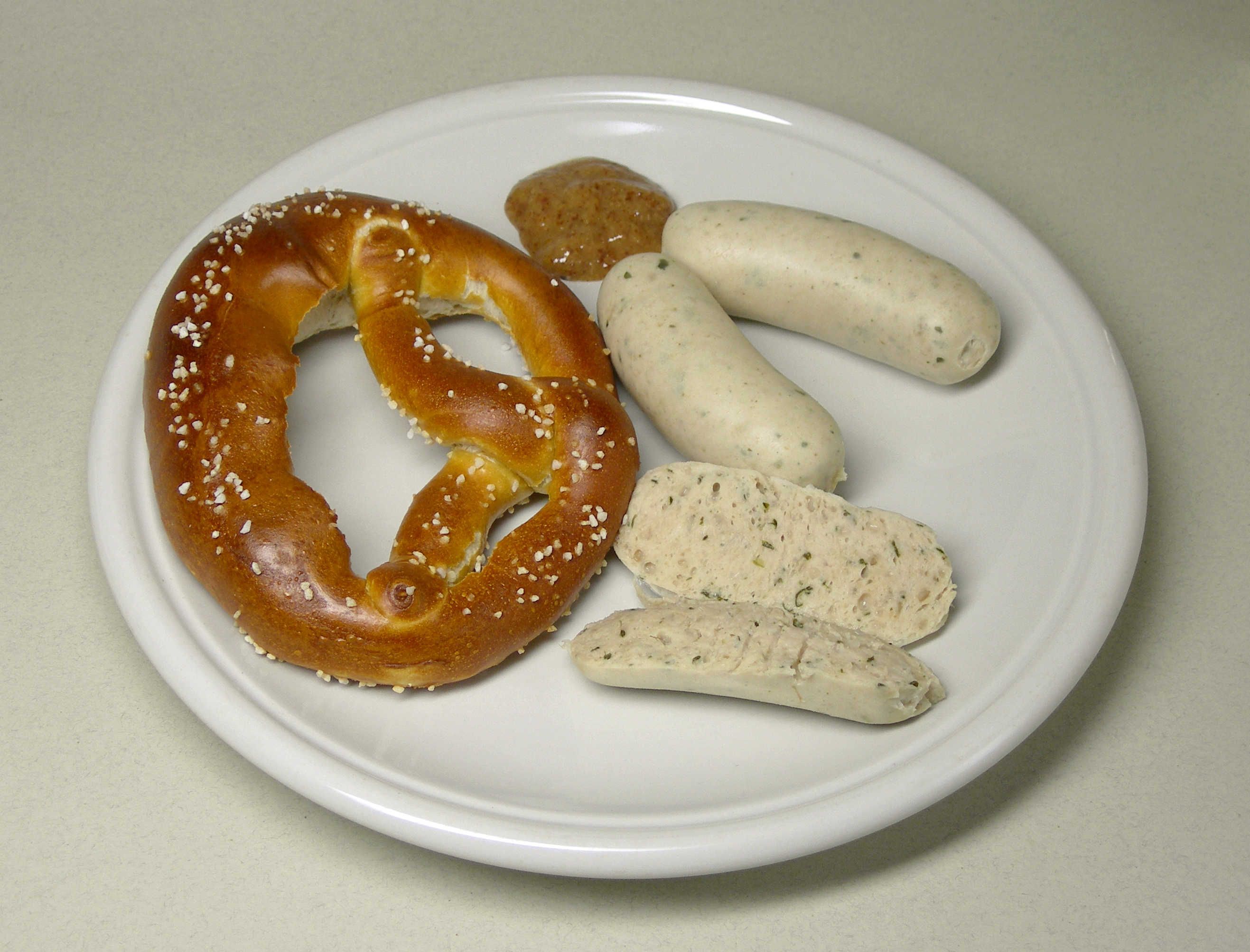


Galler bratwurst", traditionally made from veal, has been famous since then. In 1438, bratwurst started to become popular in eastern Switzerland, especially in St. Galler bratwurst (left) with schüblig (center) and cervelas (right) The introduction of the kosher bratwurst sparked some backlash on social media with comments posted that were "full of hate, anti-religious sentiment and National Socialist cliches", according to the Governor of Thuringia. In 2016, a kosher version of Thuringian bratwurst made with veal and chicken packed into goat intestines was introduced at the annual Onion Festival in Weimar, which took place between Rosh Hashanah and Yom Kippur. A two-metre-high wooden monument of a Bratwurst in a bun on a local traffic roundabout advertises the museum. In the same year, the association established the Erstes Deutsches Bratwurstmuseum (First German Bratwurst Museum) in the village of Holzhausen. Triggered by the discovery in 2000 of an account entry of 1404 first mentioning the Bratwurst in Thuringia in the town of Arnstadt, the association "Friends of the Thuringian Bratwurst" was founded in 2006. The name Thüringer Rostbratwurst is also recognised as a PGI under EU law. It is traditionally grilled over a charcoal fire and eaten with mustard and bread. The Thüringer Rostbratwurst is a spicy sausage from Thuringia. They are also sold as a snack by street vendors as Drei im Weckla (three in a bun the spelling Drei im Weggla is also common, Weggla/ Weckla being the word for "bread roll" in the Nuremberg dialect), with mustard.Īnother way of cooking Nuremberg sausages is in a spiced vinegar and onion stock this is called Blaue Zipfel (blue lobes). As a main dish three to six pairs are served on a pewter plate with either sauerkraut or potato salad, and accompanied by a dollop of horseradish or mustard. Pork-based and typically seasoned with fresh marjoram which gives them their distinctive flavour, these sausages are traditionally grilled over a beechwood fire. The denominations Nürnberger Bratwurst and Nürnberger Rostbratwurst ( Rost comes from the grill above the cooking fire) are Protected Geographical Indications (PGI) under EU law since 2003, and may therefore only be produced in the city of Nürnberg, where an "Association for the Protection of Nürnberger Bratwürste" was established in 1997. The small, thin bratwurst from Franconia's largest city, Nuremberg, was first documented in 1567 it is 7 to 9 cm (2.8 to 3.5 in) long, and weighs between 20 and 25 g. Nürnberger Bratwurst with sauerkraut and mustard, as served in the Nürnberger Bratwurst Glöckl in Munich They are sold and served freshly grilled from vendors' stands in the Marktplatz, in pairs, with or without mustard, on crusty rolls sprinkled with anise. Kulmbacher bratwursts are usually pan-fried, or grilled over a wood fire. The exact mixture is a closely guarded trade secret of each butcher. This sausage may be seasoned with salt, white pepper, nutmeg, lemon peel, marjoram, caraway, and garlic. Long and thin, it is made mostly from very finely ground veal, with very little pork. The Kulmbacher Bratwurst is a finely-ground Rohwurst from the city of Kulmbach in Upper Franconia. Traditionally, it is grilled over pinecones and served in a bread roll ( Brötchen). It is coarse in texture and is about 25 cm (10 in) long.

It is made from pork and a minimum of 15% beef, seasoned with only salt, pepper, nutmeg, and lemon zest, and bound with raw egg. The Fränkische Bratwurst is traditionally served with sauerkraut or potato salad.īratwurst originating in the city of Coburg in Franconia was first documented there in 1498. With marjoram as a characteristic ingredient, it is close in taste to the Nürnberger Bratwurst but juicier, due to its size and coarseness. The Franconian sausage is a relatively long (10–20 cm ), thick, coarse sausage, common to the whole Franconian region with slight variations.


 0 kommentar(er)
0 kommentar(er)
